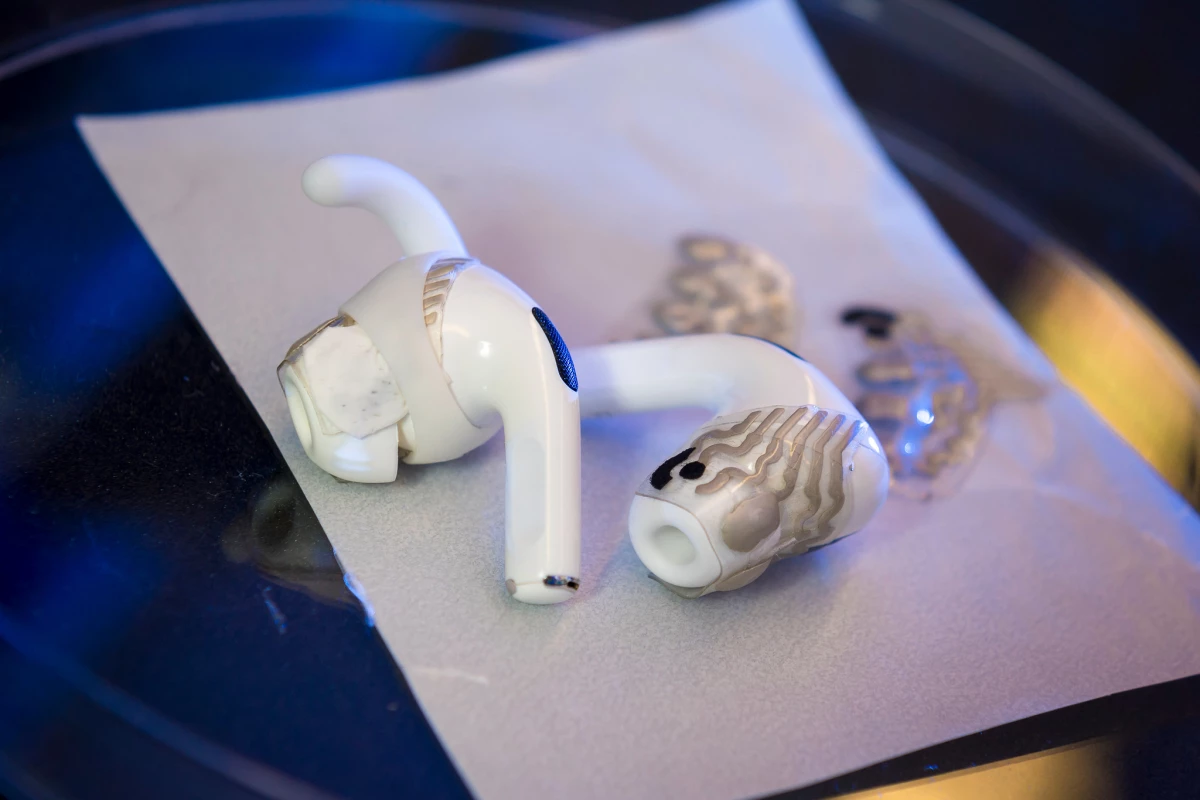Earlier this year we heard about the ear-EEG, a special earbud that reads electrical activity in the brain. Well, scientists have now developed add-on sensors that allow regular earbuds to do so, and to analyze sweat to boot.
Developed by a team at the University of California-San Diego, the sensors are screen-printed onto a single thin, flexible polyurethane substrate. That stamp-like substrate in turn gets adhered to the outside of a commercially available earbud.
When the device is inserted into the ear, integrated electrophysiological sensors make contact with the skin of the ear canal, allowing them to detect electrical activity in the adjacent temporal lobe of the brain.
At the same time, electrochemical electrodes measure lactate levels in the sweat that collects on part of the outer ear known as the tragus. These electrodes are covered in a layer of hydrogel which is hydrophilic, meaning it attracts water.
All of the sensors are not only flexible but also rather springy and cushion-like in nature. These qualities help them comfortably conform to the unique contours of each patient's ear, and to remain in contact with the skin as the patient performs various physical activities.
As the patient does so, the sensors relay their readings to the earbud, which in turn wirelessly transmits the data to a smartphone or laptop for processing. By combining the brain activity and lactate data, physicians could diagnose different types of seizures, monitor effort expended during exercises, or monitor stress levels … among other possible applications of the technology.

In tests performed so far, data obtained using the sensors matched that obtained via commercially available EEG (electroencephalography) headsets and lactate-containing blood samples.
"This research takes important first steps to show that impactful data can be measured from the human body simply by augmenting the capabilities of earbuds that people already use on a daily basis," said UC San Diego's Prof. Patrick Mercier. "Since there are no major frictions to using this technology, we anticipate eventual wide-scale adoption."
Source: UC San Diego





